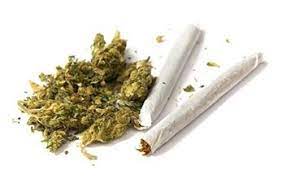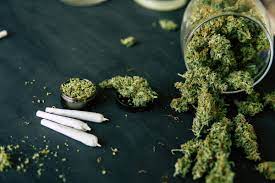Welcome to the ultimate guide on what weed looks like! Whether you're a curious beginner or someone looking to deepen your knowledge, you've come to the right place. In this article, we'll explore the appearance of cannabis plants, their various characteristics, and much more. So, let's dive in!

Table of Contents
| Sr# | Headings |
|---|---|
| 1. | Understanding Cannabis |
| 2. | Appearance of Cannabis Plants |
| 3. | Identifying Cannabis Leaves |
| 4. | Recognizing Different Cannabis Strains |
| 5. | Factors Affecting Cannabis Appearance |
| 6. | Common Misconceptions About Weed |
| 7. | The Role of Trichomes in Cannabis |
| 8. | What Weed Looks Like: A Visual Guide |
| 9. | Conclusion |
| 10. | FAQs about Cannabis Appearance |
1. Understanding Cannabis
Before delving into what weed looks like, it's crucial to understand what cannabis is. Cannabis, often referred to as marijuana, is a genus of flowering plants that includes three primary species: Cannabis sativa, Cannabis indica, and Cannabis ruderalis.
2. Appearance of Cannabis Plants
Cannabis plants exhibit a diverse range of appearances, influenced by factors such as genetics, growing conditions, and cultivation techniques. Generally, cannabis plants are characterized by vibrant green foliage, but variations exist in leaf shape, size, and color.
3. Identifying Cannabis Leaves
Cannabis leaves typically feature serrated edges and a palmate or digitate structure, meaning they have multiple leaflets attached to a central stem. The number of leaflets can vary depending on the plant's stage of growth and genetic traits.

4. Recognizing Different Cannabis Strains
Different cannabis strains display unique characteristics, including variations in height, branching patterns, and leaf morphology. Sativa strains often have narrow leaves and taller stature, while indica strains tend to be shorter with broader leaves.
5. Factors Affecting Cannabis Appearance
Several factors influence the appearance of cannabis plants, such as light intensity, nutrient levels, temperature, humidity, and genetics. Optimal growing conditions can result in vibrant foliage and robust growth.
6. Common Misconceptions About Weed
Despite its widespread use, many misconceptions surround cannabis. From its physical appearance to its effects, separating fact from fiction is essential for informed decision-making.
7. The Role of Trichomes in Cannabis
Trichomes are tiny, resinous glands found on cannabis flowers and leaves. These structures produce cannabinoids, terpenes, and other compounds responsible for the plant's aroma, flavor, and effects.
8. What Weed Looks Like: A Visual Guide
To help you visualize cannabis plants, refer to this detailed visual guide showcasing various strains and their distinct characteristics.

9. Conclusion
In conclusion, understanding what weed looks like involves recognizing the diverse appearances of cannabis plants, understanding the factors influencing their growth, and dispelling common misconceptions. By familiarizing yourself with these aspects, you'll develop a deeper appreciation for this versatile plant.
10. FAQs about Cannabis Appearance
Q1. What color are cannabis leaves?
A1. Cannabis leaves typically appear vibrant green, but they can also exhibit hues of purple, red, or yellow depending on the strain and environmental conditions.
Q2. How can I differentiate between indica and sativa plants based on appearance?
A2. Indica plants often have broader leaves and a bushier appearance, while sativa plants tend to be taller with narrower leaves.
Q3. Are there any visual cues to determine the potency of cannabis buds?
A3. Trichome density and coloration are indicators of cannabis potency. Mature buds with abundant, milky-white trichomes are often more potent.
Q4. Can cannabis plants change appearance during different stages of growth?
A4. Yes, cannabis plants undergo distinct growth stages, each characterized by unique appearances. From vegetative growth to flowering, the plant's morphology evolves significantly.
Q5. Do all cannabis strains smell the same?
A5. No, cannabis strains exhibit a wide range of aromas, influenced by their unique terpene profiles. Some strains may have citrusy, floral, or earthy scents, among others.
Now that you're equipped with comprehensive knowledge about what weed looks like, you can confidently explore the fascinating world of cannabis with a discerning eye!

